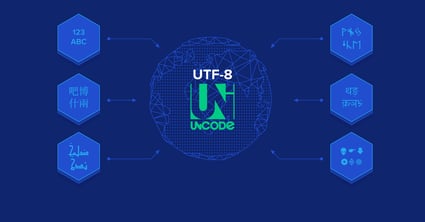All you need to know about 'UTF'-Unicode Transformation Format
 sri aravindan v
sri aravindan v
UTF stands for "Unicode Transformation Format." It is a character encoding standard that represents a wide range of characters from various writing systems around the world. In simple terms, character encoding determines how characters are represented and stored in computer systems.
To explain UTF-8 with an analogy, let's consider a library with books written in different languages. Each book represents a character, and the library represents the computer system.
In the early days of computers, different libraries (computer systems) used their encoding systems, such as ASCII, which supported only basic English characters. It was like having a library where all the books were written in English, and you couldn't find books written in other languages.
Then Unicode came into existence, which aimed to include characters from all writing systems. It's like creating a library that contains books written in various languages, allowing people from different cultures to access their books.
Now, within the Unicode standard, there are different encoding formats. UTF-8 is one of them. It's like organizing books in the library according to different shelves. In the case of UTF-8, it uses a variable-length encoding scheme. It means that characters are represented using one to four bytes, depending on their Unicode code point. It's like some books require more space on the shelf because they have more pages, while others take less space.
In summary, UTF-8 is a character encoding format that allows computers to store and represent characters from different writing systems, similar to how a library organizes books from various languages on different shelves to accommodate the diversity of literature.
Subscribe to my newsletter
Read articles from sri aravindan v directly inside your inbox. Subscribe to the newsletter, and don't miss out.
Written by

sri aravindan v
sri aravindan v
👋 Hello there! I'm Sri Aravindan, a passionate DevOps enthusiast and aspiring Web3 explorer. I have completed my B.E CSE and currently learning DevOps.